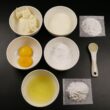When it comes to savoring a glass of white wine, you might not immediately think about its caloric content.
However, if you’re watching your weight or simply trying to maintain a balanced diet, knowing how many calories in a glass of white wine you’re consuming is important.
Understanding Calories in White Wine
The caloric content of white wine can vary depending on the sugar content, alcohol content, and serving size.
On average, a 5-ounce glass of white wine typically contains between 120 and 130 calories.
The more sugar the wine contains, the higher the calorie count.
| Type of Wine | Average Calories per 5-ounce glass |
|---|---|
| Dry White Wine | 120 |
| Sweet White Wine | 130 |
When comparing the caloric content of white wine to other alcoholic beverages, it’s important to note that wine generally has fewer calories than many mixed cocktails but more than light beer or pure spirits.
For more information on the caloric content of various foods and drinks, you can check our articles on how many calories in a slice of pizza, how many calories in a can of coke, and how many calories in two scrambled eggs.
How Wine Fits Into a Balanced Diet
Contrary to popular belief, wine can fit into a balanced diet when consumed in moderation.
The key is to be mindful of your serving sizes and the total calories you’re consuming from all sources throughout the day.
If you’re counting calories, it can be helpful to think of wine as a treat or indulgence, similar to dessert.
Just as you would limit your cake or ice cream intake to keep your calorie count in check, the same principle applies to wine.
A glass of wine can be a delightful way to unwind at the end of the day, but it’s important to factor those calories into your overall daily intake.
Remember, the goal is not necessarily to eliminate all indulgences from your diet but to find a balance that allows you to enjoy the foods and drinks you love while still meeting your health and weight management goals.
For more insights on how to balance your diet, check out our article on what is calorie counting.
The Calorie Content of White Wine
When it comes to counting calories, understanding what factors influence the caloric content of your favorite beverages, such as white wine, can be quite helpful.
In this section, we’ll look at the factors affecting the calorie content in white wine and how it compares to other alcoholic beverages.
Factors Affecting Calorie Content
The calorie content in a glass of white wine depends on a few key factors:
- Alcohol content: Generally, the higher the alcohol content, the higher the calories. Most white wines typically have an alcohol content between 11% to 14%.
- Sugar content: Wines that contain more residual sugar (RS) are higher in calories. Dry white wines have less sugar and, thus, fewer calories than sweeter white wines.
- Serving size: The number of calories also depends on the serving size. A standard serving of wine is 5 ounces, but if you pour more, you naturally consume more calories.
Calorie Comparison: White Wine Vs Other Alcoholic Beverages
To give you a clearer idea of how white wine measures up against other beverages, let’s compare the calorie content of a standard serving of white wine with other common alcoholic drinks.
| Beverage | Calories |
|---|---|
| White Wine (5 oz) | 120-130 |
| Red Wine (5 oz) | 125-130 |
| Beer (12 oz) | 150-200 |
| Margarita (4 oz) | 170 |
| Gin & Tonic (7.5 oz) | 200 |
As you can see, a glass of white wine typically contains fewer calories compared to other alcoholic beverages.
However, keep in mind that the calories can quickly add up if you’re enjoying more than one glass.
By understanding how many calories are in a glass of white wine and how this compares to other drinks, you can make more informed decisions about your beverage choices, particularly if you’re conscious about your caloric intake.
For a more detailed comparison of calorie content in different foods and drinks, you might want to read our articles on how many calories in coffee or how many calories in rice.
How Serving Size Affects Calorie Count
When counting calories, portion sizes matter. This concept applies to everything from a slice of pizza to a glass of white wine.
Understanding the standard serving sizes and estimating the calories in your wine glass can help you maintain a balanced diet.
Understanding Standard Wine Serving Sizes
The standard serving size of wine is typically 5 ounces, but it can vary depending on the type of wine and the style of the glass.
A standard pour of white wine usually contains between 100 and 120 calories, although this can vary depending on the specific variety of wine.
For example, a drier white wine like Sauvignon Blanc will typically have fewer calories than a sweet white wine like Moscato.
| Wine Type | Serving Size (oz) | Calories |
|---|---|---|
| Dry White Wine | 5 | 100-120 |
| Sweet White Wine | 5 | 130-170 |
Estimating Calories in Your Wine Glass
If you’re not sure how much wine is in your glass, there are a few tricks you can use to estimate.
A standard 5-ounce serving of wine is about the same size as a yogurt container or a baseball.
If your wine glass is larger, it can be easy to pour more than one serving, so keep this in mind when you’re pouring your next glass.
Remember, the type of wine also plays a significant role in the calorie count.
Sweeter wines tend to have more calories than drier ones because of their higher sugar content.
The alcohol content can also affect the calorie count – wines with a higher alcohol content usually have more calories.
| Wine Type | Alcohol Content (%) | Calories (per 5 oz) |
|---|---|---|
| Dry White Wine | 12 | 100-120 |
| Sweet White Wine | 14 | 130-170 |
Remember, moderation is key when enjoying your favorite wine.
By being mindful of your serving sizes and choosing wines with fewer calories, you can enjoy your glass of white wine without worrying about the impact on your waistline.
For more information on calorie counting and other foods, check out our articles on what is calorie counting and how many calories in various foods.
Impact of Wine on Weight Management
When it comes to weight management, it’s important to consider the role that your favorite glass of white wine can play.
As a calorie counter, you’re likely already aware that calories must be balanced with calories out to maintain or lose weight.
However understanding how alcohol like wine interacts with your body can help you make informed decisions about your drinking habits.
How Alcohol Interferes with Fat Burning
When you sip a glass of white wine, your body prioritizes metabolizing the alcohol over other nutrients, such as fat or carbohydrates.
This is because your body recognizes alcohol as a toxin and works to remove it as quickly as possible.
Fat burning takes a back seat during this process, leading to more fat being stored in your body.
This doesn’t mean enjoying a glass of wine immediately leads to weight gain.
The key is moderation. Consuming wine in moderate amounts might not significantly disrupt your weight management efforts.
However, regular or heavy consumption of wine can slow down your fat burning process and contribute to weight gain over time.
Wine and Appetite
Another factor to consider is the impact of wine on your appetite.
Alcohol can stimulate your appetite, making you more likely to reach for extra snacks or larger portions.
A glass of wine before or during a meal can potentially lead to consuming more calories than you would have otherwise.
It’s also worth noting that the calories in a glass of white wine can add up quickly.
Even if you’re sticking to moderate drinking guidelines, those wine calories can contribute significantly to your daily caloric intake, especially if you enjoy a couple of glasses per day.
If you’re trying to manage your weight, it’s important to be mindful of these factors.
You might choose to enjoy your wine with a healthy meal to help keep your appetite in check.
You can also consider lower-calorie wine varieties or smaller serving sizes to help manage the calorie content.
Remember, everyone’s body responds differently to alcohol. What works for one person might not work for another.
It’s always a good idea to consult with a healthcare provider or a registered dietitian if you have questions about alcohol and weight management.
For more information on counting calories, check out our article on what is calorie counting.
Tips for Enjoying Wine While Counting Calories
When you’re counting calories, enjoying your favorite glass of white wine can seem like a challenge.
However, with some knowledge and practical tips, you can still savor the taste of wine without worrying about your waistline.
Choosing Lower-Calorie Wine Varieties
Not all wines are created equal when it comes to calorie content.
In fact, the wine variety can substantially impact how many calories are in a glass of white wine.
For instance, dry white wines generally have fewer calories than sweet white wines. This is because the sugar in sweet wines translates to more calories.
So, if you want to reduce your calorie intake, choosing a dry white wine could be a good move.
| Type of Wine | Approximate Calories per 5 oz Glass |
|---|---|
| Dry White Wine | 116 |
| Sweet White Wine | 165 |
Remember that these numbers are only estimates. The actual calorie content can vary depending on factors like the alcohol content and sugar levels in the wine.
Mindful Drinking Tips
Even when you’re counting calories, you can still enjoy a glass of wine. The key is to practice mindful drinking. Here are some tips to help you enjoy your wine while keeping your calorie intake in check:
- Control Your Portions: Stick to the standard wine serving size, which is about 5 ounces. This will help you keep track of your calorie intake more accurately.
- Drink Slowly: Savor each sip of your wine. This enhances your enjoyment of the wine and helps you drink less overall.
- Avoid Mixing: Mixing wine with sugary sodas or juices can significantly increase the calorie content. Stick to drinking your wine as is, or consider adding a splash of soda water for a refreshing twist.
- Hydrate: Make sure to drink water alongside your wine. This can help you stay hydrated and also slow down your drinking.
Remember, wine can be part of a balanced diet. The key is to enjoy it in moderation and make informed choices about your drinking.
For more information on calorie counting and how it can help you manage your dietary goals, visit our article on what is calorie counting.








